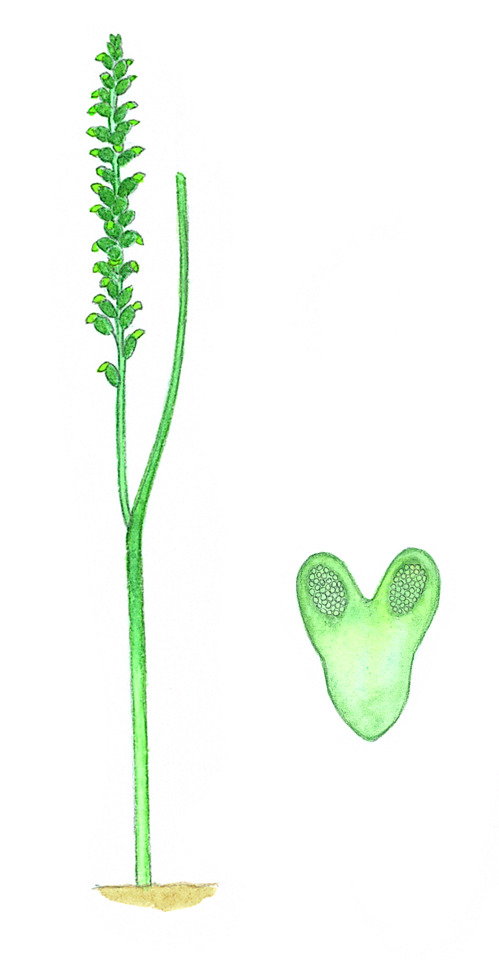Microtis parviflora
R.Br. Slender Onion-orchidFlowering stem 20–50 cm tall, slender to robust, more or less fleshy. Leaf erect, 20–50 cm long, usually exceeding inflorescence, hollow, apex pointed; sheath opening well below inflorescence. Flowers 10–80, green, suberect, in usually crowded raceme 3–16 cm long; ovary obovoid to more or less ellipsoid, 3–5 mm long, on short, stout or slender pedicel, standing well out from stem; dorsal sepal ovate to circular, c. 2 mm long, hooded, with a short straight or recurved tip; lateral sepals linear-oblong, slightly shorter than dorsal sepal, almost acute, deflexed, becoming curved; petals lanceolate and sickle-shaped, shorter than dorsal sepal, almost acute, more or less concealed by dorsal sepal. Labellum decurved through a semicircle, more or less cordate; 1–2 mm long; margins entire or undulate; apex obtuse or acute with a short decurved point; lamina with prominent pair of basal calli, ovate in shape, sometimes flanking a small pouch which bulges on underside of labellum, apical callus absent or at most represented by a minute papillose area. Column with prominent rounded wing-like auricles. Flowers Oct.–Feb.
Wim, GleP, VVP, VRiv, GipP, OtP, WaP, Gold, CVU, GGr, DunT, NIS, EGL, EGU, WPro, HSF, HNF, Strz, MonT, VAlp. All States except NT. New Zealand. Common and widespread in many habitats including open forests, woodlands, scrublands and grasslands in dry to moist soils. Often colonises gardens, lawns and pastures.
The labellum shape and calli arrangement are characteristic for this species. Flowers are frequently pollinated by ants.
Entwisle, T.J.; Bates, R.J. (1994). Microtis. In: Walsh, N.G.; Entwisle, T.J., Flora of Victoria Vol. 2, Ferns and Allied Plants, Conifers and Monocotyledons, pp. 865–868. Inkata Press, Melbourne.
 Spinning
Spinning



